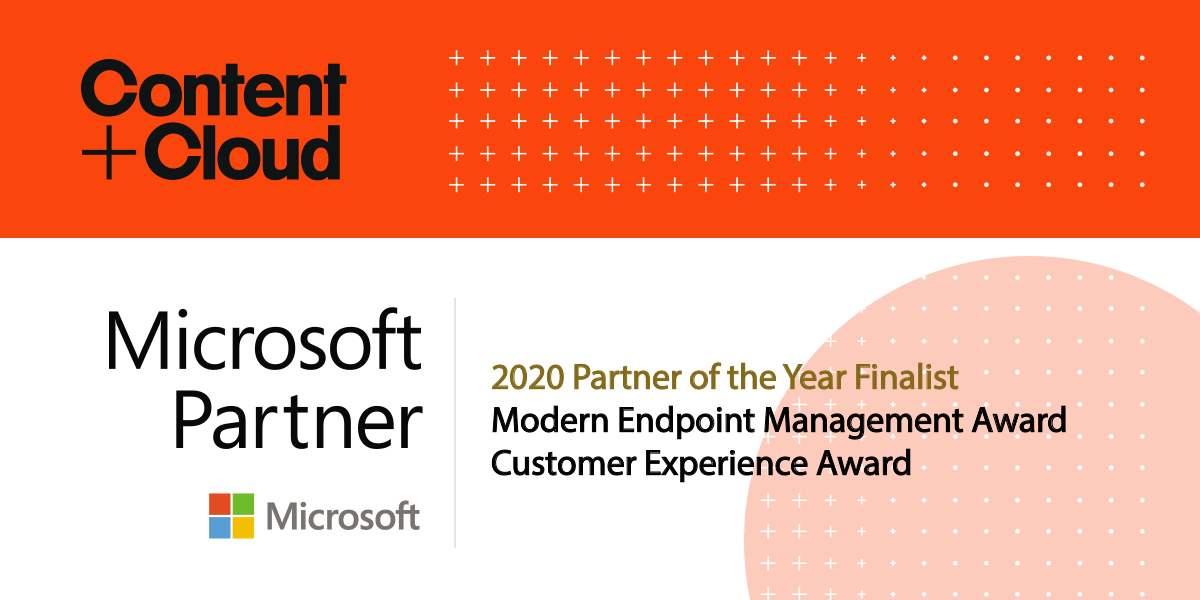
How to simplify your IT team’s life and keep your remote workers secure
As the UK Government pivots from encouraging workers to return to their offices to advising them to continue working from home, technology is the enabler for keeping your organisation’s wheels on the proverbial wagon.
From an IT perspective, the strategy must be greater agility and simplification. This means seizing the solutions that deliver great remote working experiences and simultaneously boost your security. It means zero or light touch when it comes to hardware and ultimately, doing more with less.
Here, we take a spin of three solutions which could have been designed for the COVID era of scattered workforces: Intune, Windows Virtual Desktop and Microsoft Managed Desktop.
Microsoft Intune: a whistle-stop tour
Microsoft Intune helps to protect your organisation’s data and apps in three core ways:
-
Mobile Device Management (MDM).
Manage which device can access what data by remotely controlling the device settings. You can also retire devices and wipe data.
-
Mobile Application Management (MAM).
Here, you secure the data on the devices, for example, your company emails in the Outlook app.
-
Desktop Management (Windows PCs and Macs).
Permit only compliant and secure desktops to access your organisation’s systems. For example, only desktops with the latest Windows updates and the appropriate configuration settings.
Intune applies across three common business scenarios:
-
Company-owned devices.
Protect your assets and manage what employees are permitted to do, and crucially, what they’re not.
-
BYOD devices.
Supports the convenience of ‘bring your own device’, enabling your workforce to use their personal devices to access company email and cloud services safely.
-
Devices managed by third parties.
Devices which are secured by a third-party’s system or an MDM service provider. In this scenario, you can apply MAM to protect your organisation’s data on the devices, while the third-party provider continues to control the devices themselves.
And we can’t mention Intune without referencing Conditional Access, which lets you control who is accessing your systems and how they’re doing it. For example, if someone attempts to access a company app by signing in on their mobile phone; Conditional Access will only permit this if the app has Intune policies applied.
In a nutshell, Intune deploys and monitors the condition and compliance of your apps and your devices. And by using conditional access, you can permit or deny access to your corporate data.
You might also like these FAQs by Content and Code, a Content+Cloud company: Intune Frequently Asked Questions.
Windows Virtual Desktop
Windows Virtual Desktop (WVD) is a Microsoft virtual desktop service which your people connect to via any endpoint with an Internet connection. The Windows Virtual Desktop service runs on a virtual version of Windows 10 in Microsoft’s Azure Cloud.
It’s ideal for call centre workers, who might only need access to email and a couple of business applications. And in this age of home working, the access controlled WVD service lets your people to work from anywhere, on any device.
Microsoft Managed Desktop
If we define Windows Virtual Desktop as something that you access, then the Microsoft Managed Desktop (MMD) is something that you have. Remember, WVD allows users to share devices (take the scenario of call centre shift workers, for example) or use any device with an Internet connection. A Microsoft Managed Desktop device ties itself to the user.
Lifting the burden from IT teams, the MMD cloud-powered service manages and secures your desktop estate. It includes 24/7 premium first line IT support, and you get your pick of modern devices from trusted brands: Microsoft Surface, HP or Dell.
With zero-touch by your IT team, MMD comes into its own for new starters who are working remotely and need to hit the ground running. A device is home-delivered and ready to go in minutes.
Every MMD device comes complete with Windows 10, Office 365 ProPlus, and your custom or line of business apps; you manage these through a Company Portal.
As the Microsoft Managed Desktop service is a relatively new kid on the block, it’s common for people to confuse it with Windows Virtual Desktop. For a detailed comparison, catch this blog by IT Lab, a Content+Cloud company: Microsoft Managed Desktop vs Windows Virtual Desktop.


